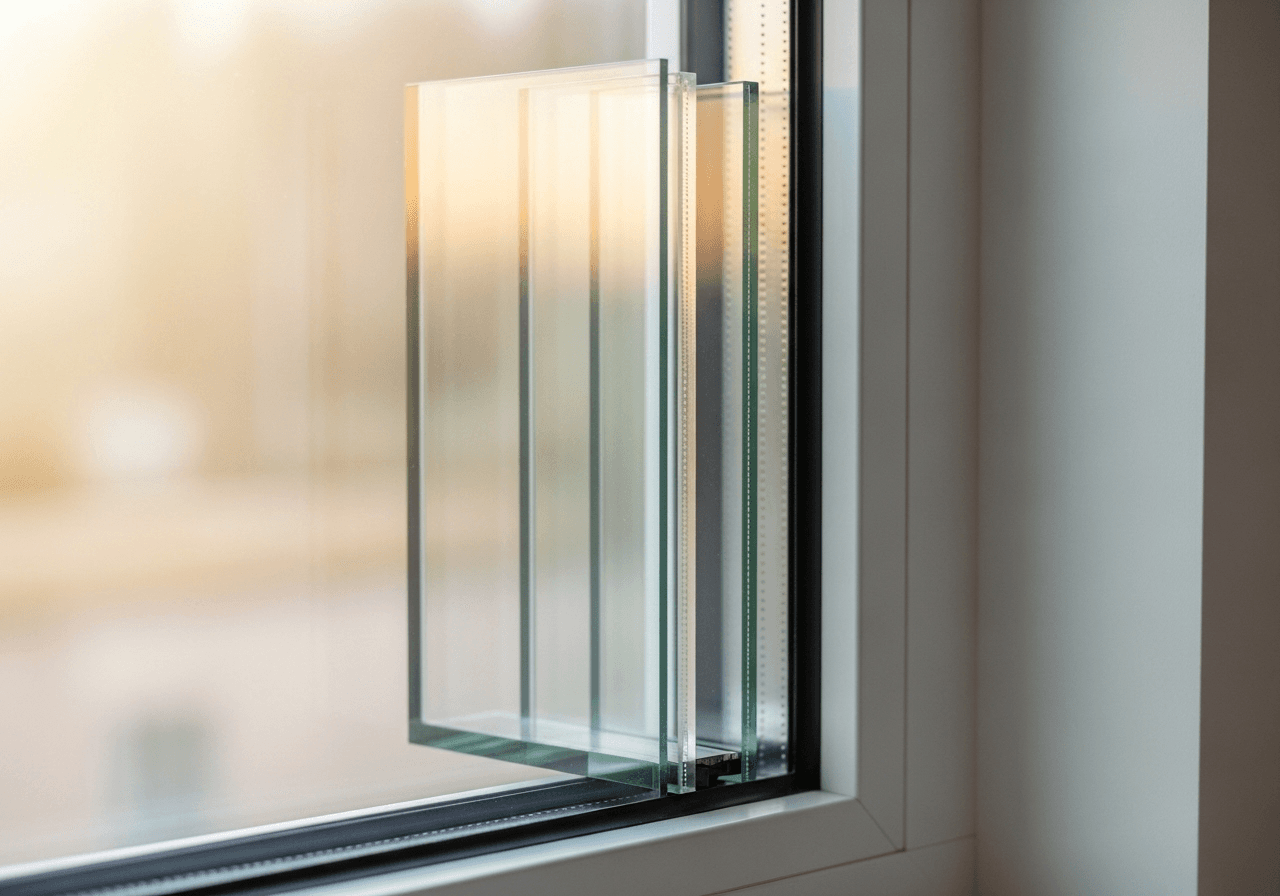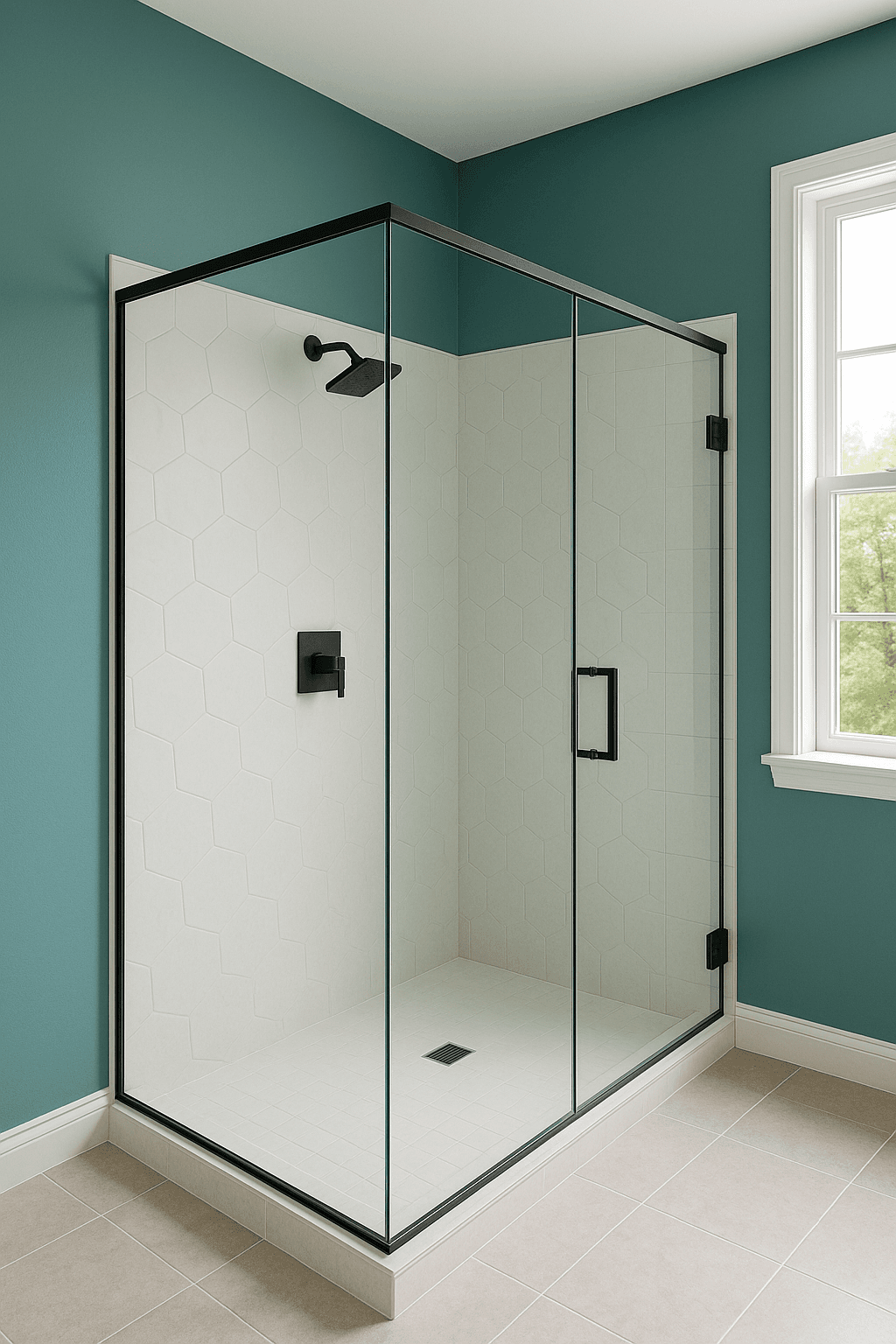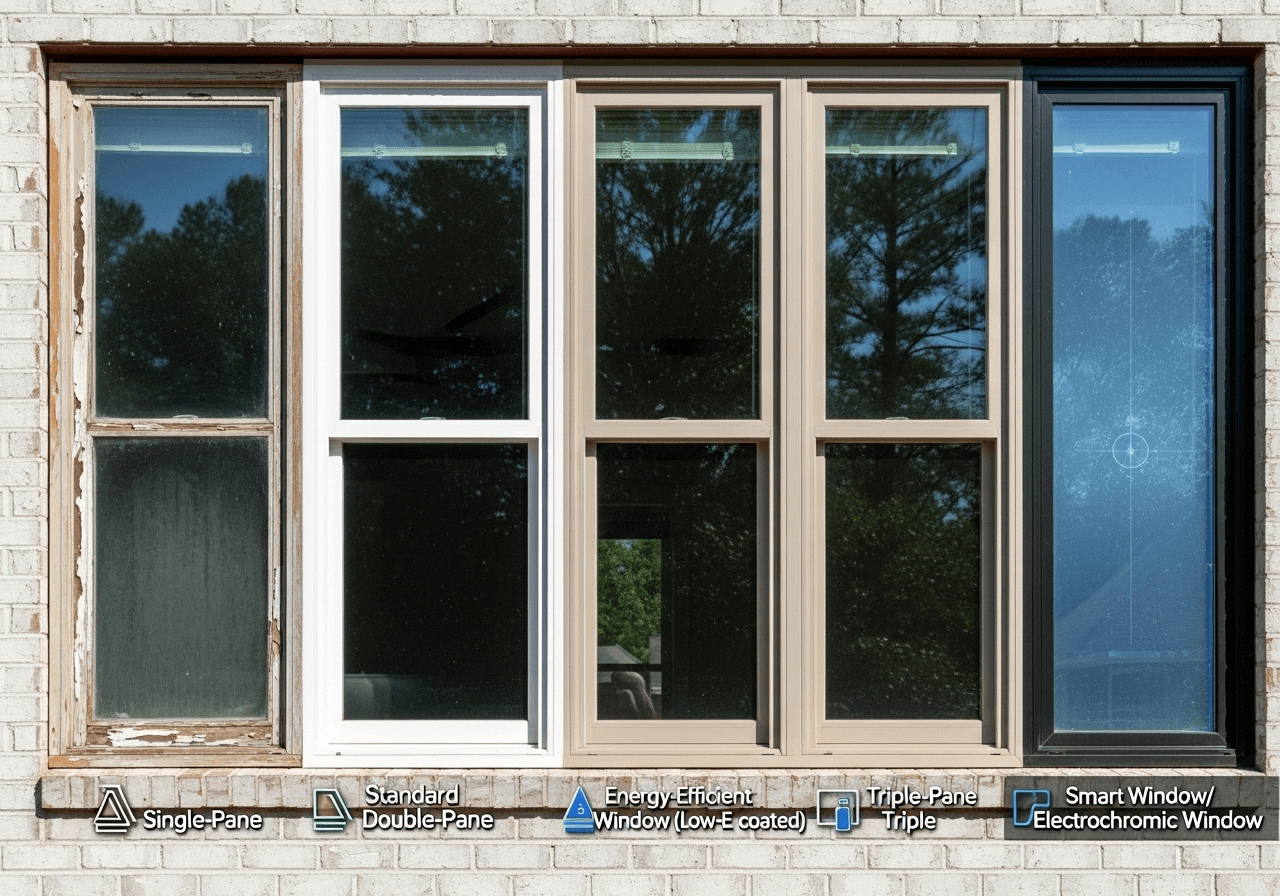Energy Efficiency Showdown: Aluminum vs Glass for North Carolina Homes & Businesses
Compare energy performance of aluminum and glass installations in North Carolina's climate. Our Interior Architects analyze heating, cooling, and long-term energy savings for smart investment decisions.

North Carolina's diverse climate—from humid coastal regions to mountain elevations—creates unique energy efficiency challenges for building materials. As Interior Architects specializing in both aluminum and glass systems, we've analyzed the energy performance of thousands of installations across the state. Here's your comprehensive guide to making energy-smart choices for your home or business.
North Carolina's Energy Efficiency Landscape
Climate Zone Challenges
Coastal Plain (Zones 3A-4A):
- High humidity and cooling loads
- Hurricane resistance requirements
- Salt air corrosion considerations
- Year-round moisture management
- Moderate heating and cooling needs
- Variable weather patterns
- Urban heat island effects
- Balanced energy requirements
- Significant heating requirements
- Temperature extremes
- Snow load considerations
- Thermal performance critical
Energy Cost Implications
Average North Carolina Energy Costs (2025):
- Electricity: $0.12-0.16 per kWh
- Natural Gas: $12-16 per 1000 cubic feet
- Annual HVAC costs: $800-2400 per household
- Commercial energy: $0.10-0.14 per kWh
- 15% improvement = $120-360 annual savings (residential)
- 20% improvement = $500-2000 annual savings (commercial)
- Compound savings over 20 years = $5000-25000+
Aluminum Energy Performance Analysis
Thermal Properties of Modern Aluminum Systems
Standard Aluminum Frames:
- U-Factor: 0.65-1.20 (lower is better)
- Solar Heat Gain Coefficient: 0.35-0.65
- Air Leakage: 0.1-0.3 cfm/sq ft
- Thermal bridging: Significant without breaks
- U-Factor: 0.35-0.65 (significant improvement)
- Solar Heat Gain Coefficient: 0.25-0.45
- Air Leakage: 0.05-0.15 cfm/sq ft
- Thermal bridging: Minimized with polyamide breaks
- U-Factor: 0.25-0.45 (premium efficiency)
- Solar Heat Gain Coefficient: 0.20-0.35
- Air Leakage: 0.02-0.08 cfm/sq ft
- Thermal bridging: Eliminated with advanced breaks
Aluminum Energy Benefits
Excellent Air Sealing:
- Precision manufacturing ensures tight tolerances
- Professional installation minimizes infiltration
- Weather stripping systems provide lasting seals
- Reduced heating/cooling loss through air leakage
- No warping or shrinking affects seals
- Consistent performance over 20+ years
- Weather resistance preserves efficiency
- Minimal maintenance required
- Strong frames support triple-pane glazing
- Accommodates low-E coatings effectively
- Gas fills (argon/krypton) enhance performance
- Large glass areas maximize daylight
Aluminum Limitations
Thermal Conductivity:
- Metal conducts heat without thermal breaks
- Condensation potential in humid climates
- Higher U-factors than alternative materials
- Requires thermal break technology for efficiency
- High-performance systems cost 30-50% more
- Thermal breaks add complexity and expense
- Professional installation required
- Longer payback periods for efficiency features
Glass Energy Performance Analysis
Glass System Thermal Properties
Single-Pane Glass:
- U-Factor: 0.90-1.20 (poor performance)
- Solar Heat Gain Coefficient: 0.75-0.85
- Minimal insulation value
- Not recommended for NC climate
- U-Factor: 0.25-0.50 (good performance)
- Solar Heat Gain Coefficient: 0.25-0.70
- Insulation value improved significantly
- Standard for new construction
- U-Factor: 0.15-0.30 (excellent performance)
- Solar Heat Gain Coefficient: 0.20-0.50
- Maximum insulation value
- Premium efficiency option
Advanced Glass Technologies
Low-E Coatings:
- Reduce heat transfer by 30-50%
- Control solar heat gain
- Preserve visible light transmission
- Essential for NC climate efficiency
- Argon: 15-20% efficiency improvement
- Krypton: 25-30% efficiency improvement
- Xenon: 35-40% efficiency improvement
- Significant performance enhancement
- Electrochromic: Variable solar control
- Thermochromic: Temperature-responsive
- Photochromic: Light-responsive
- Dynamic performance optimization
Glass Energy Benefits
Superior Insulation:
- Multiple panes create insulation chambers
- Gas fills enhance thermal resistance
- Low-E coatings reflect heat appropriately
- Excellent U-factors achievable
- Selective coatings control heat gain
- Prevents overheating in summer
- Allows beneficial heat in winter
- Optimized for NC solar angles
- Reduces artificial lighting needs
- Daylight harvesting potential
- Improved occupant comfort
- Energy savings through lighting reduction
Glass Limitations
Higher Initial Investment:
- Triple-pane systems cost significantly more
- Advanced coatings add expense
- Gas fills require specialized manufacturing
- Premium installation required
- Large glass areas can create heat loads
- Requires careful design integration
- HVAC system sizing implications
- Shading strategies may be needed
Comparative Energy Analysis
Heating Performance (NC Mountains)
Aluminum Systems:
- Thermal breaks essential for performance
- Frame efficiency varies significantly
- Professional installation critical
- Good performance when properly specified
- Excellent insulation with multiple panes
- Low-E coatings optimize heat retention
- Gas fills enhance winter performance
- Superior performance in heating climates
Cooling Performance (NC Coastal/Piedmont)
Aluminum Systems:
- Excellent air sealing reduces infiltration
- Light-colored finishes reflect heat
- Thermal breaks prevent heat conduction
- Good performance with proper design
- Low-E coatings control solar heat gain
- Selective transmission optimizes cooling
- Insulation reduces conductive heat transfer
- Advanced coatings provide excellent control
Air Sealing Performance
Aluminum Systems:
- Precision manufacturing ensures tight seals
- Professional installation critical
- Weather stripping systems effective
- Consistent performance over time
- Sealed units provide excellent performance
- Frame integration determines overall performance
- Professional installation essential
- Performance depends on frame material
Durability & Long-Term Performance
Aluminum Systems:
- 20+ year performance consistency
- No shrinkage or warping affects seals
- Weather resistance maintains efficiency
- Minimal performance degradation
- Sealed units last 15-25 years
- Potential seal failure reduces performance
- Replacement costs for failed units
- Performance can degrade over time
Building Type Specific Recommendations
Residential Applications
Single-Family Homes:
- Optimal Choice: Thermally broken aluminum with double/triple-pane glass
- Performance: U-factor 0.25-0.35, excellent air sealing
- ROI: 8-12 year payback typical
- Benefits: Durability, low maintenance, consistent performance
- Optimal Choice: High-performance aluminum with energy-efficient glass
- Performance: Balances cost and efficiency
- ROI: 6-10 year payback typical
- Benefits: Standardization, maintenance efficiency
Commercial Applications
Office Buildings:
- Optimal Choice: Aluminum curtain wall with high-performance glass
- Performance: Maximum energy efficiency and daylight
- ROI: 5-8 year payback typical
- Benefits: Professional appearance, excellent performance
- Optimal Choice: Aluminum storefront with selective glass coatings
- Performance: Balance of visibility and efficiency
- ROI: 7-12 year payback typical
- Benefits: Durability, security, energy performance
- Optimal Choice: Thermally broken aluminum with appropriate glass
- Performance: Efficiency balanced with cost
- ROI: 10-15 year payback typical
- Benefits: Durability, low maintenance, consistent performance
Professional Implementation
Design Process
Energy Assessment:
- Current performance evaluation
- Improvement opportunity identification
- Cost-benefit analysis
- Recommendation development
- AutoCAD precision design
- Energy modeling integration
- Code compliance verification
- Performance optimization
- Professional installation teams
- Quality control procedures
- Performance testing
- Warranty protection
Performance Monitoring
Post-Installation Services:
- Energy usage monitoring
- Performance verification
- Optimization recommendations
- Maintenance planning
Making Your Energy-Smart Choice
Ready to optimize your building's energy performance with the right aluminum and glass combination?
Free Energy Efficiency Assessment Includes:
- Comprehensive building energy analysis
- Material and system recommendations
- Cost-benefit analysis for your specific situation
- Incentive and rebate identification
- Implementation timeline and planning
*Serving all of North Carolina with energy-efficient aluminum and glass solutions. Reduce your energy costs while enhancing comfort and value.*
Ready to Get Started?
Our Interior Architects are ready to help you choose the perfect glass and aluminum solutions for your project.
Related Articles

Aluminum vs Glass Shower Enclosures: Complete 2025 Buyer's Guide
Compare aluminum and glass shower enclosures across cost, durability, maintenance, and aesthetics. Our Interior Architects break down which option delivers the best value for North Carolina homeowners.
Read Article
Window Frames: Aluminum vs Vinyl vs Wood - North Carolina Climate Guide
Which window frame material performs best in North Carolina's humid climate? Our Interior Architects compare aluminum, vinyl, and wood frames across durability, energy efficiency, and maintenance.
Read Article